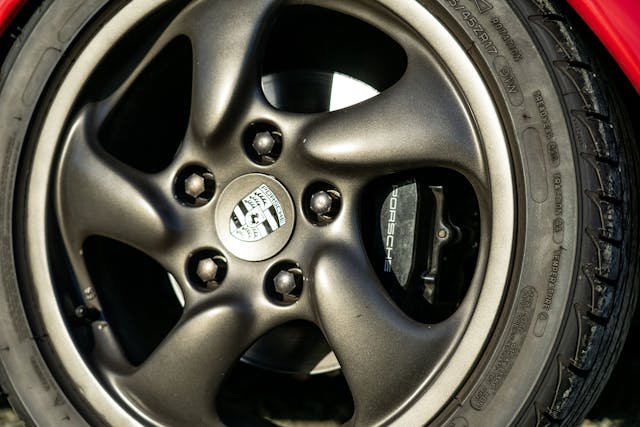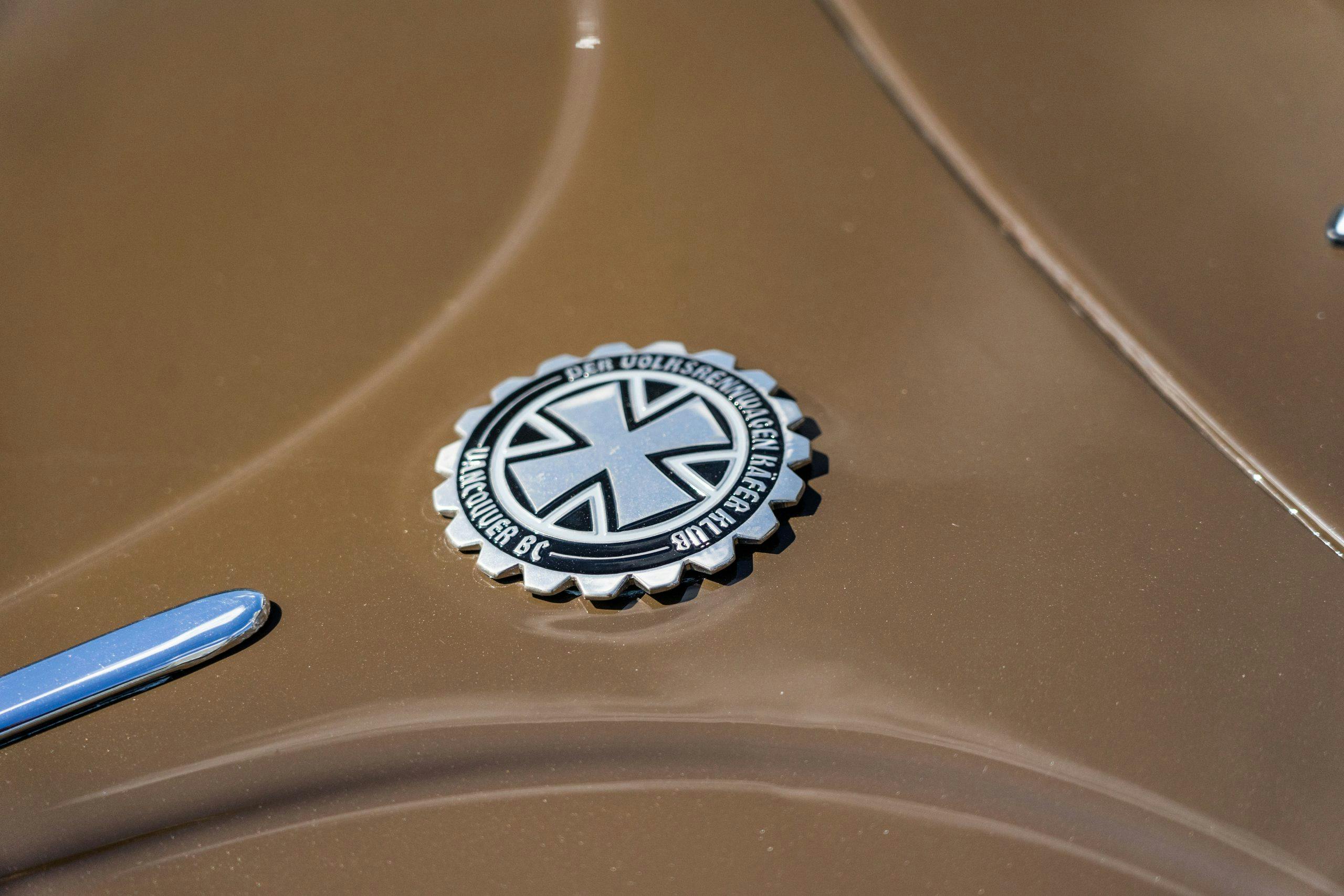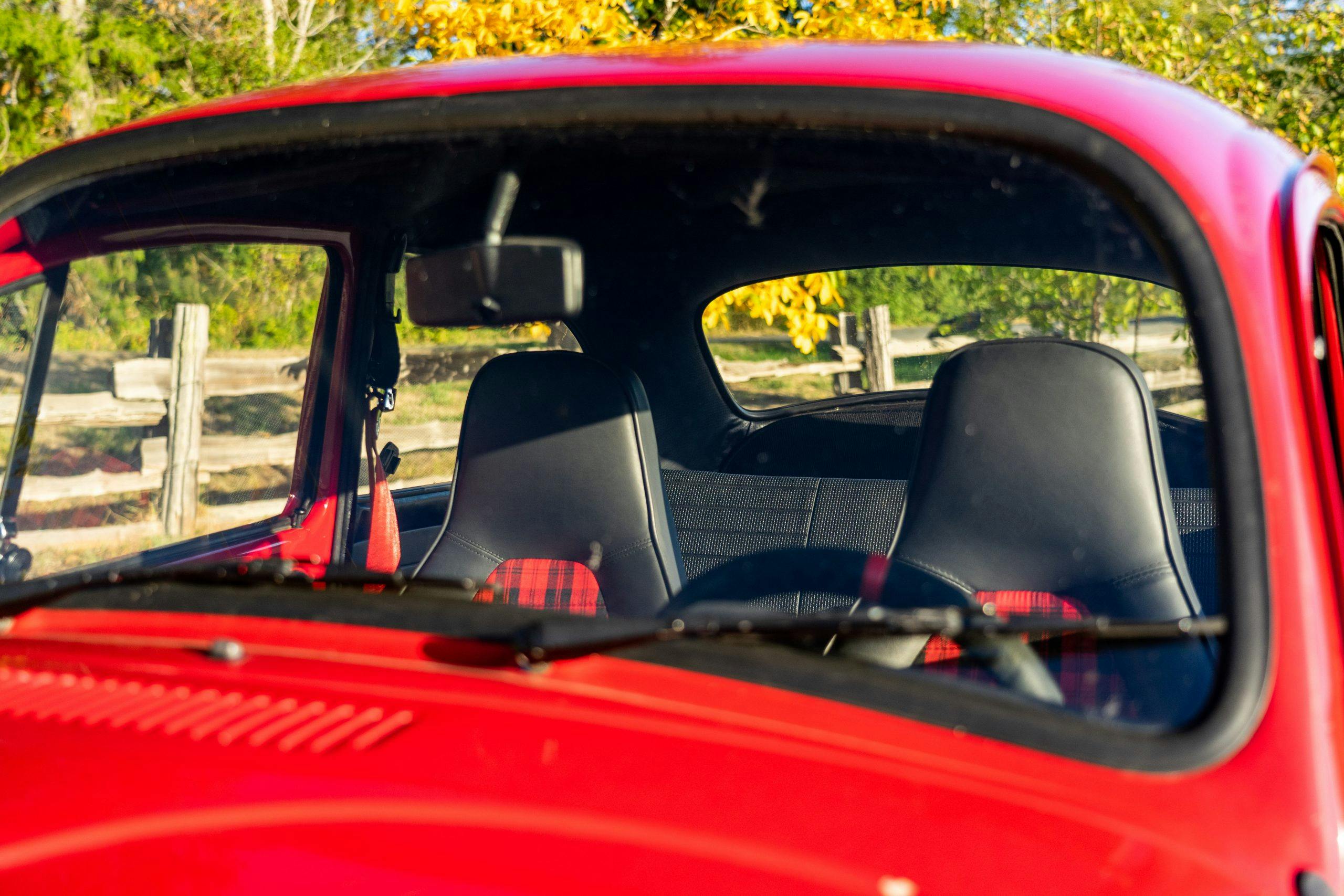Media | Articles
Drag slicks or 911 brakes? How California and Germany painted the VW Beetle’s blank canvas
Few cars have had experienced the character-development arc of the humble Volkswagen Beetle. It went from Nazi propaganda icon to symbol of the hippie movement to advertising darling to drag racer, from Baja desert fighter to children’s Disney hero to hecho en Pueblo Mexican taxicab. Across 81 years and 23 million cars sold, the Beetle was a blank canvas, ready to soak up anyone’s ideas. Here’s what California and Germany did with it.
First, we should clarify that the “California Look” Beetle and the “German Look” Beetle are more about curating a flavor than adhering to a rulebook. In the same way that a 1932 Ford can be turned into a hot rod with any number of tweaks, each of these two Beetle categories is open to a wide range of personal interpretation.
Take this little brown Bug, belonging to North Vancouver VW specialist Geoff Peterson. Based on a 1957 car, it has a bored-out 2.33-liter air-cooled four-cylinder that makes around 200 hp, and it’s seriously quick. With pizza-cutter front tires up front and drag slicks out back, it’ll run low-12-second passes all day.
With almost all its chrome trim removed, understated paint work, and a rear hatch reworked for better cooling, this Beetle ticks most of the boxes on the Cali Look checklist. The solid drag wheels would likely have been five-spoke BRM units in-period, with a conical competition mirror likely fitted in place of the flattish OEM unit. Also, Geoff’s Beetle is a bit sneaky—many of its body panels are actually fiberglass, to save weight.
We settle into the big, square “biscuit”-look bucket seats, and Peterson takes me for a quick rip around the block. The Cali-look Beetle hooks up in second gear with shocking ferocity. The weight in the rear anchors the still-sticky old drag slicks, the front goes light, and the little car rears back on its haunches.
Marketplace
Buy and sell classics with confidence
“I’d take it to the Friday night drags,” Peterson says, “We were always looking to beat the 5.0-liter Mustangs.”
The California Look dates back to the mid-1960s, slightly ahead of the Beetle craze brought on by Disney’s “Herbie” movies. Centered around Orange County in Los Angeles, SoCal tuning pioneers started turning their Volkswagens into dragstrip champions. Cars were stripped of anything deemed unnecessary, with lowered, raked suspensions and minimalist bumpers. When Herbie arrived to broaden the popular appeal of a quick Beetle, people started buying tuning parts out of L.A. and the California look exploded.

At the first Bug In, held October 20, 1968, Volkswagen owners from all over gathered to show off, swap parts, and drag race each other down the strip. Racing was at the heart of the culture, not much different from the earlier hot rodders and their deuce coupes, nor the later explosion of import tuners and their hopped-up Honda Civics. Beetles were cheap, easy to work on, and you could make them faster with every sliver of weekly paycheque you put aside.
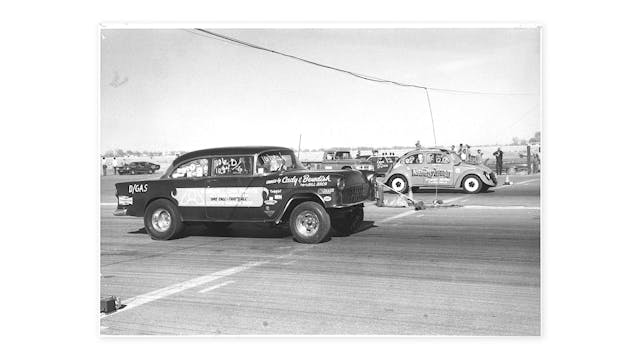
California-style Beetle tuning is an enduring phenomenon. It continues today, but has evolved from its grassroots beginnings to more collector-oriented enthusiasm. Beetle fans obsess over period-correct details and hard-to-find OEM parts. But they’re still eager to get together for swap meets and drag-racing, same as it was in the 1970s.
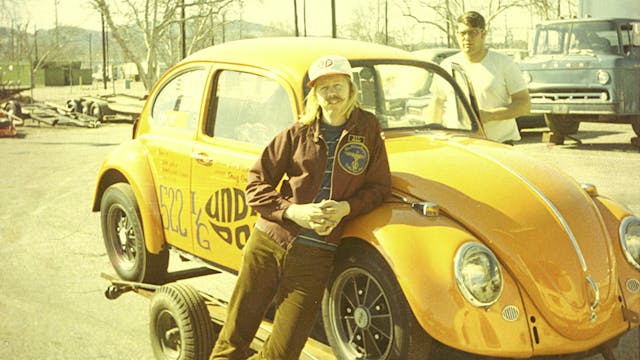
For the most colorful 1990s-era Beetle enthusiasm, we have to cross the pond to Germany. A one-make series based around the Super Beetle, which was called the 1303 in European markets, the Käfer Cup put Beetles racing door-to-door at various tracks (“käfer” is German for “beetle”). These were serious racing cars, fitted with cages, racing slicks, and whatever power could be eked out of the latest air-cooled VW engines produced. Beetles were sold in Europe right up until the mid-1980s.
Consider the 1303 of Rolf Holzapfel Tuning, built in 1992. It featured a five-speed Porsche 911 gearbox, Porsche-pattern BBS three-piece wheels, and a hybridized Type 4/T24 16V engine that was codeveloped by Erhard Melcher of AMG. It made a reliable 240 hp, and was immediately dominant.
Naturally, the style of the circuit carried over to the street-going Beetles belonging to those who sat in the grandstands of Käfer Cup races. This red example, belonging to Hagerty’s own Dave Hord, embodies most of the elements of a German Look car.
Dave doesn’t have an obsession as much as a Beetle infestation. He’s built dozens of VWs over the years and is currently working on restoring the Beetle he drove when he was eighteen. “I’ve started off wrong here immediately,” he says, noting that this car is a 1969 Beetle, and not the later 1303.
But the details are there. Essentially, a German Look car should be the Beetle as if it were produced by Porsche. Large, modern Porsche wheels are essential, as well as a highly tuned engine, usually based on the later Type 4 flat-four. While California look cars are often lowered, the suspension of a German Look Beetle is intended to perform in the corners. Custom-made pieces and items borrowed from the Porsche catalog are common. Porsche brakes are also must-haves.
Where Peterson’s Beetle is perfect for a quarter-mile blast, Hord needs his cars to tolerate distance—he drives roughly 40,000 miles every year. The California Look Beetle was a dopamine firehose; Hord’s German Look machine is delightful in its usability.
What’s it like to drive? Take all the performance of a modern car, perhaps a Boxster, and then drop a joyful Beetle shell over top. The engine, a 2.1-liter air-cooled four-cylinder, makes just 150 hp but the car is relatively light, and you get to play with the whole tachometer without attracting unwanted attention from die Polizei. What’s really phenomenal is the sheer level of grip, which seems at odds with the Beetle’s tallish shape. It’s like driving a weaponized highchair.
Like the California Look, subtlety is a hallmark of a proper German Look Beetle. The rally-style lights and plaid accents for its Porsche seats say more about Hord’s particular build signature, but the blacked-out trim and badging are German Look essentials.
Both cars epitomize the Beetle’s flexibility as a platform for expression. One is a stoplight dragster’s dream, steeped in golden-hued 1970s California nostalgia. The other is a highly functional and well-engineered daily driver that’s about a thousand times more fun than any modern Volkswagen. And most modern Porsches.
A Beetle can be anything. Your wrench is its paintbrush. If you had one, what would you create?













